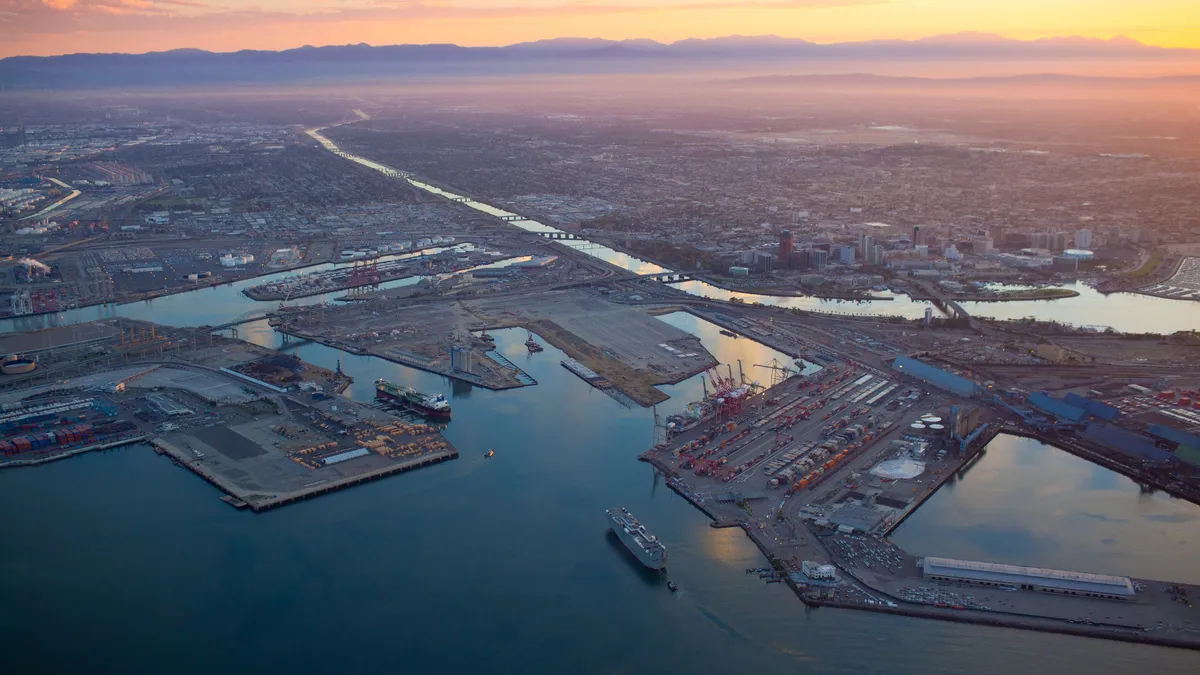Dive Brief:
- Maersk expects to cancel 140 sailings in the second quarter after issuing 90 blank sailings (a 3.5% drop in capacity) earlier this year, the carrier said in its first-quarter report released Wednesday.
- The void trips are a way for the carrier to cut costs as demand for ocean freight falls due to lockdown measures stemming from the coronavirus pandemic. Maersk expects demand to fall 20% to 25% in the second quarter across all its businesses, it said in the report. The company had been forecasting a 1% to 3% increase in demand for ocean freight in 2020.
- The size of the company's global container fleet has grown to 23.3 million as of the end of the first quarter. The idle fleet grew to 9.4% (2.2 million TEUs) in the first quarter, which Maersk said was the "highest record in more than 10 years."

Dive Insight:
The rate of ocean freight capacity cancellations has leveled off with carriers announcing six new blank sailings last week, but this is well above what is typically seen as a result of the Chinese New Year, according to the latest numbers from Sea-Intelligence.
In the second quarter, "the hardest-hit ports on Asia-North America West Coast are Prince Rupert and Long Beach, with both ports seeing a 20-25% reduction in port calls," Sea-Intelligence CEO Alan Murphy said in a release.
The San Pedro Bay port complex, which includes The Port of Long Beach and The Port of Los Angeles, had 61 canceled sailings during the first quarter and expects to have 48 blanked trips April 1 through June 30, The Port of Long Beach said in a press release.
Rates from China/East Asia to the U.S. East Coast are down about 7% compared to the same period last year while rates from China/East Asia to the U.S. West Coast are up about 7% year over year, according to numbers from Freightos.
Overall, rates in the first quarter were up 7.9% year over year, according to Maersk, which cited the China Composite Freight Index. "The IMO restrictions on sulphur emissions imposed in January 2020, which has led to vessels being taken out of service for scrubber retrofitting, as well as a large amount of blanked sailings were likely the main drivers behind the increase," the carrier said in its report. The IMO regulations resulted in high fuel costs, which the carrier passed along as higher rates for shippers, it explained in the report.













